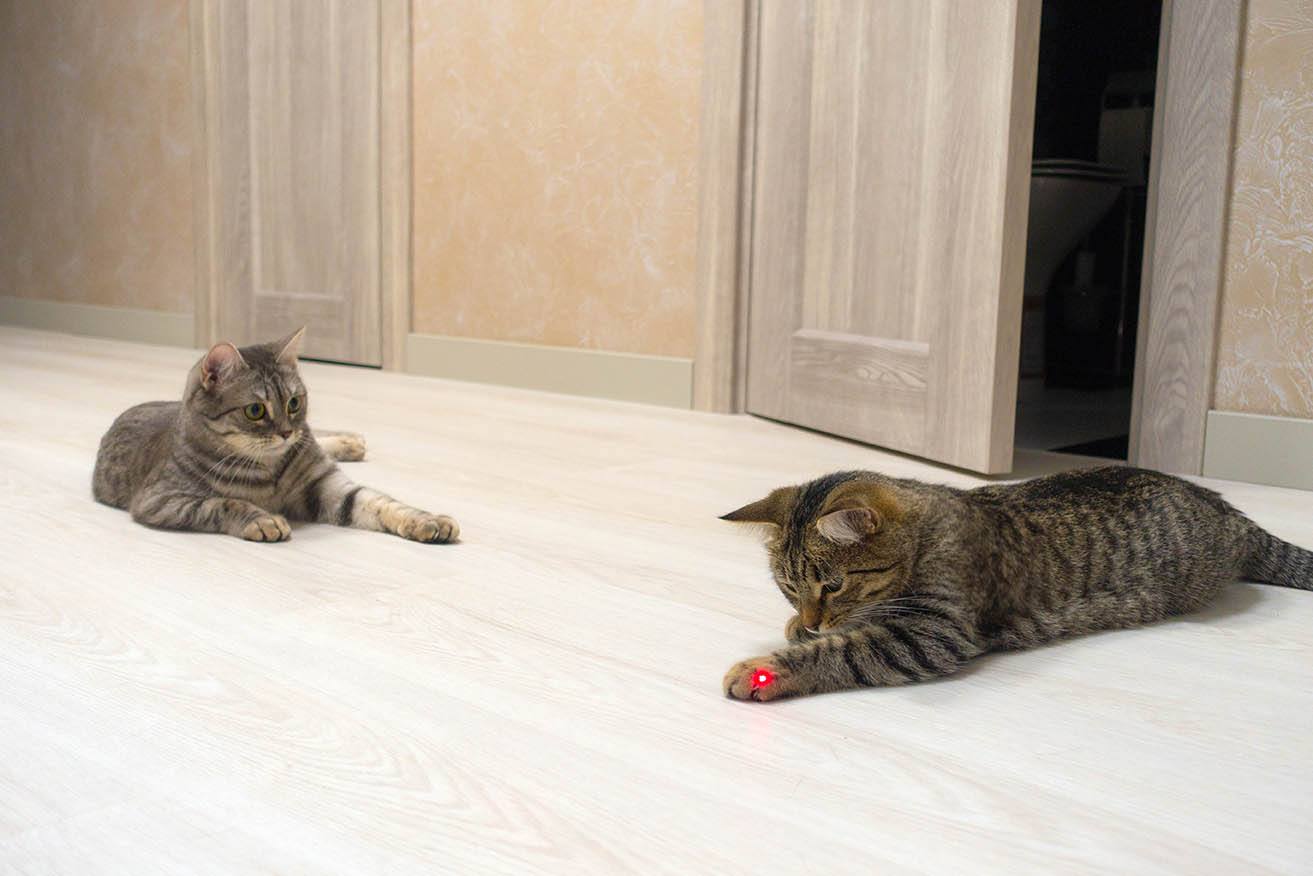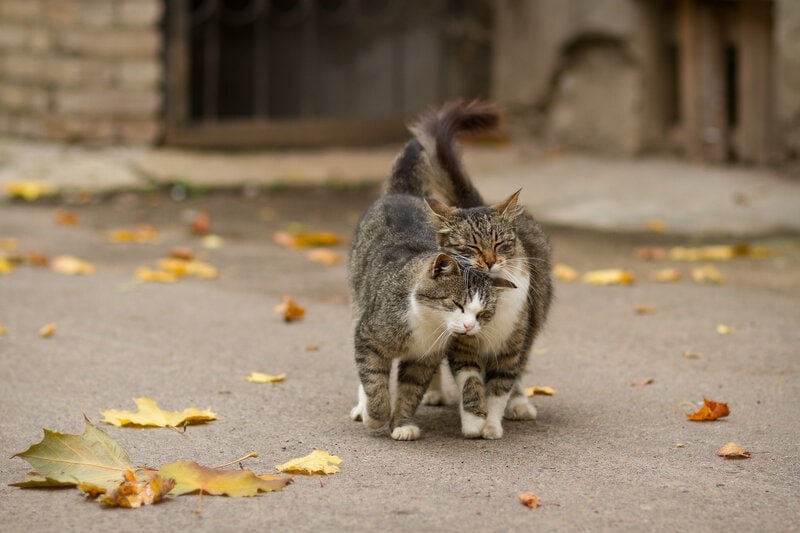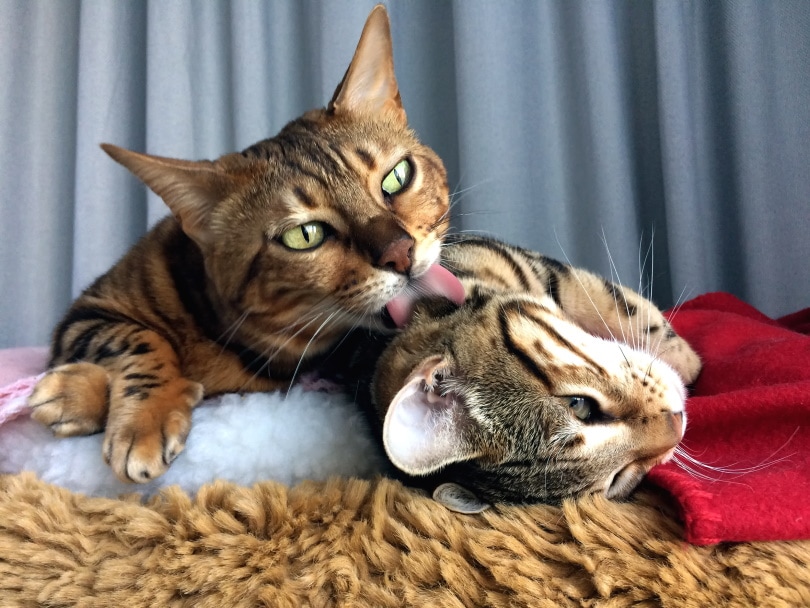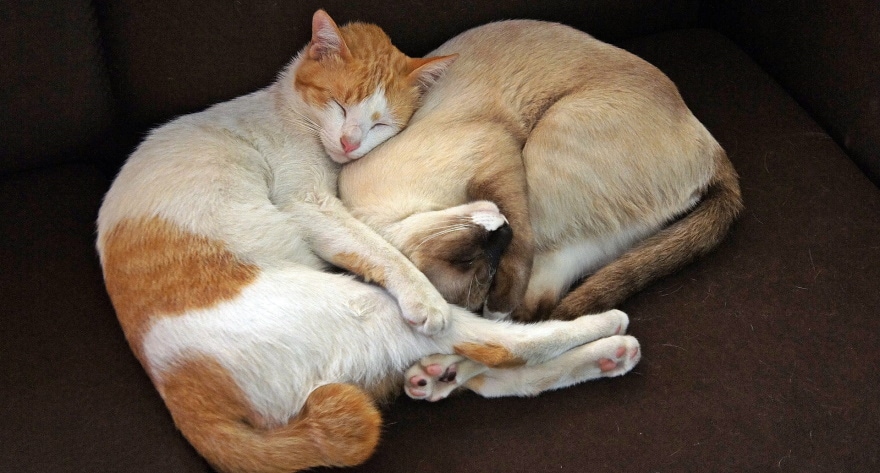
As pet owners, we’re constantly having to fight the temptation to view our pets’ behavior through the lens of our own human experience. For example, you may witness affectionate and loving behavior between two cats of the same gender and wonder if you’re witnessing kitty sparks flying. Or your male cat may consistently mount another male cat, leading you to wonder what’s going on between them.
Can cats be gay, lesbian, or bisexual? While same-sex behavior has been observed in many animal species, including cats, cats are currently not thought to be gay in the same way that we understand the term in humans. In this article, we’ll look at some causes of homosexual behaviors in cats and why they don’t necessarily mean you should buy your cat a rainbow collar just yet. Unless you really like rainbows, that is.
What Does It Mean to Be Gay, Lesbian, or Bisexual in Humans?
Ask a human member of one of these communities this question and you’ll likely get a million different right answers. However, the scientific definition of homosexuality is a person who is attracted to someone of the same sex.
Generally, the term “gay” refers to men who are attracted to other men, while “lesbians” are women attracted to other women. Bisexuals are people of either sex who are attracted to both sexes.
In humans, being gay, lesbian, or bisexual doesn’t just refer to sexual behavior alone but emotional, romantic, and physical attraction as well.

The Jury Is Still Out: Homosexuality in Animals
Homosexual behaviors have been observed in hundreds of different animal species, including cats. These behaviors range from more obviously sexual actions to same-sex parenting partnerships. Besides behavior, scientists also take into consideration how long animals maintain same-sex relationships and whether they do so exclusively when trying to understand the nature of these bonds.
The problem with interpreting these homosexual behaviors as proof that animals can be gay, lesbian, or bisexual is that the motivations behind the actions aren’t always known. As we mentioned earlier, human sexual orientation is driven not just by behavior but attraction and feelings, factors that we don’t really have a good way of measuring or discovering in animals like cats.
In short, there just isn’t enough evidence to decide one way or the other whether animals can be gay. We know the behaviors happen. We just don’t know all the motivations behind them and what it means when it comes to sexual orientation in animals.

Let’s Talk About Love
In humans, love and falling in love are key concepts when trying to understand sexual orientation. Love may seem like a giant mystery at times but imagine trying to determine if your cat can feel love.
Knowing whether cats are capable of love would help us in learning whether cats can be gay or not.
Recently, a study concluded that cats are capable of loving their owners. The study researchers characterized cat love as forming a secure attachment with their owners. If that doesn’t sound very romantic and you don’t remember your cat ever bringing you flowers and chocolate, remember that we can’t explain animal behavior in human terms.
To a cat, a secure attachment, one where they know they can rely on you and feel safe with you, seems to be the definition of love. Humans may consider those attributes of love but there’s generally a lot more complex feelings involved. Without the gift of speech, cats can’t tell us more about their ideas of love.
We can see cats performing affectionate acts towards each other and conclude that they probably do love each other. But does this family bond and love mean that cats are capable of romantic love as well? The act of mating in cats certainly doesn’t seem very loving. But what explains some of the other same-sex behaviors you may have noticed in your cat? Let’s talk about a few of them now.

Same-Sex Behaviors in Cats: Explained
Mounting
Ok, so maybe your cat isn’t gay, but if he isn’t, why does he insist on mounting other male cats? Dog owners may be more commonly forced into awkward situations with mounting dogs, but cats also perform this action.
Studies have concluded that mounting in behavior in cats primarily serves as a way for cats to establish dominance over other cats, rather than anything sexual in nature. Both male and female cats may mount other cats of the same gender.
In dogs, mounting can also occur in play or when the dog is stressed, anxious, or overexcited. Cats could also have similar reasoning behind some of their mounting behaviors.

- Related Read: Can Cats Mate With Dogs? All You Need To Know!
Mutual Grooming
Signs of affection among same-sex cats, like mutual grooming, can also be confusing to us. However, this behavior has more of a social motivation than a sexual one. Cats groom each other as a way to bond and help keep any potential conflicts at bay. Mutual grooming generally occurs between cats who live together.
Grooming can also be related to dominance, just like mounting. Dominant cats may use grooming as a way to demonstrate control over other cats without resorting to violence. Essentially the cats are saying, look how I’m grooming your neck instead of biting it, but don’t push me too far…

Sleeping Together
In this case, sleeping together refers to cats actually snoozing with each other rather than anything sexual. Cats of the same sex may cuddle and nap together but cats of opposite sexes show these behaviors as well. Again, the reason is social rather than sexual in nature.
Sleeping and cuddling together is one way that cats demonstrate their bond with each other. These behaviors occur among family groups but with cats, family isn’t just blood relatives. Any group of cats can bond and share these loving behaviors.

Conclusion
Cats are mysterious creatures by nature and it’s normal for us to want to know more about our feline friends. Wondering whether your cat is gay, lesbian, or bisexual seems logical when you consider some of the actions our cats take.
However, we have to be careful when we make assumptions about cat behavior based on what we know about our own. Your cat may be fierce and fabulous but that doesn’t mean he is gay. Science and research are always evolving and, in the future, maybe we’ll gain new insight into cat sexuality.
Featured Image Credit: Matt Rob, Shutterstock






